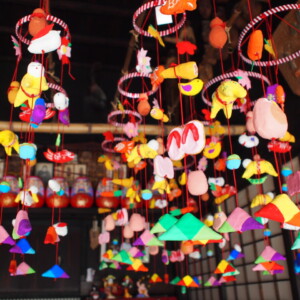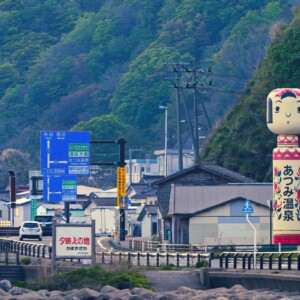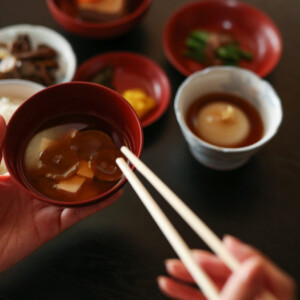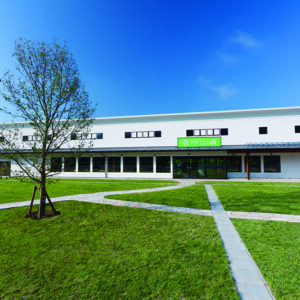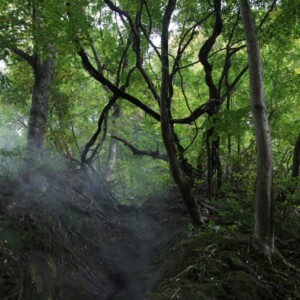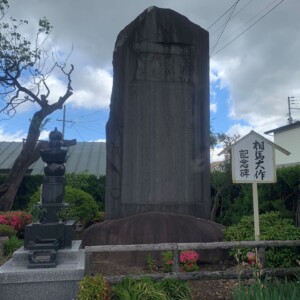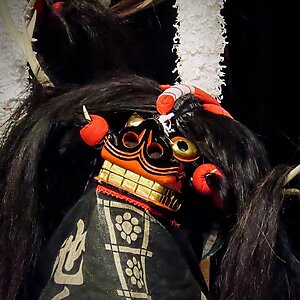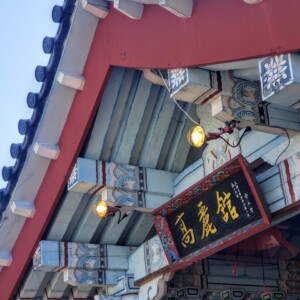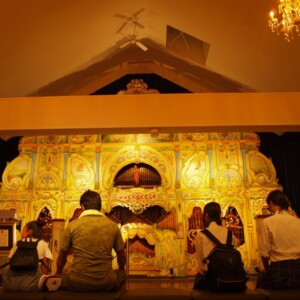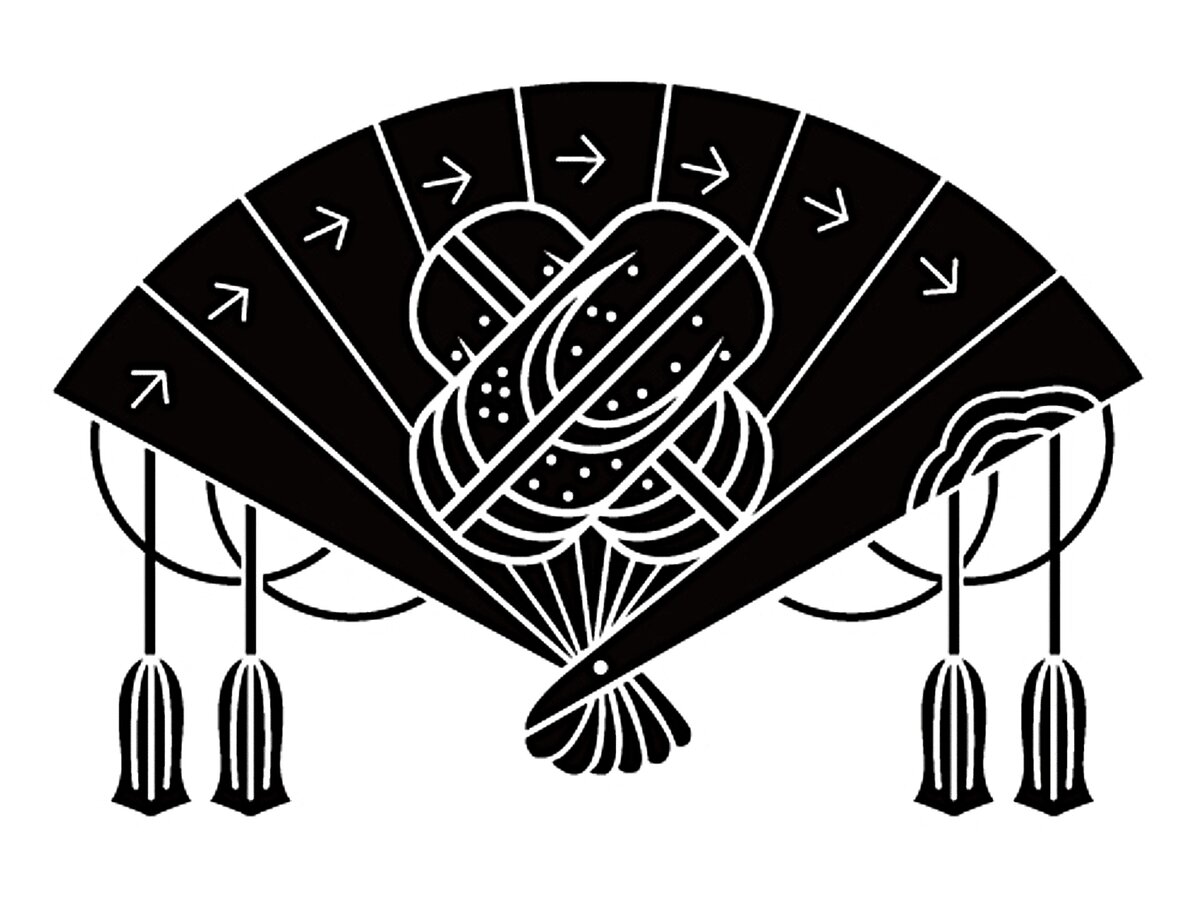
Hiyama Ando clan, ruled Akita during the Sengoku period and based in Noshiro [Akita Prefecture]
table of contents
- 1 The mouth of the Yoneshiro River, where people lived since the Stone Age
- 2 Sugisawadai Ruins, a large village site used during the Jomon period to the Heian period.
- 3 The Kashiwakoto Kaizuka is a shell mound that was about 3,000 years ago. The buried human bones are also exposed
- 4 During the Asuka period, Abe Hirafu marched and the Noshiro region came to control the Yamato Imperial Court.
- 5 During the Nara period, Noshiro Minato was a popular trade with the Bohai Province of Mainland China.
- 6 The Ando clan of Jusanminato, which reached its heyday from the late Heian period to the Kamakura period.
- 7 Hiyama Castle was an impregnable castle
- 8 The castle was abandoned by the Edo period, one country and one castle ordinance.
Noshiro City is a city located in northern Akita Prefecture, with a population of approximately 47,000 people bordering the Sea of Japan on the west side (as of December 2024, Noshiro City). The Yoneshiro River, a first-class river, flows east and westward through the center of the city, and Noshiro Port at the mouth of the estuary has long flourished as the center of distribution in northern Akita Prefecture.
Today's city of Noshiro was born in 2006 when the former Noshiro city, at the mouth of the Yoneshiro River, and the former Futatsuimachi, in the middle of the Yoneshiro River.
The mouth of the Yoneshiro River, where people lived since the Stone Age
Excavations of the ruins show that people have been living in the coast of Noshiro for around 30,000 years before the Stone Age. In addition, ruins such as the Sugisawadai Ruins (Sugisawada Iseki/Iwa-Suzusawadai, Noshiro City/National Designated Ruins) that are located in the site of a fairly large village from 7,000 years ago (early Jomon period) and the Kashiwakosho Shell Mound (Not only Kashiko but Izuka/Noshiro City/National Designated Historic Site) from 2,000 years ago (late Jomon period) were discovered, and many people lived there.
The Jomon period was the time when the Paleolithic ice age ended and the global warming was occurring. The average temperature was about 2-3°C higher than in Japan in the 21st century, and the sea level was about 3-5m higher. The fact that the Sugisawadai Ruins and Kashiwagosho Shell Moss are located about 3km inland from the current coastline is proof that they were the sea even around the ruins.
Sugisawadai Ruins, a large village site used during the Jomon period to the Heian period.
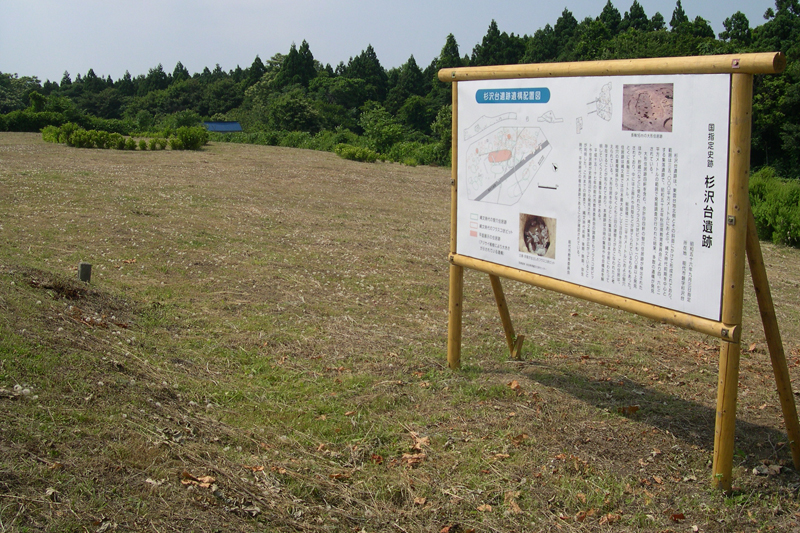
The Sugisawadai Ruins are the site of a village from the early Jomon period (approximately 7,000 years ago) to the Heian period (794-1185). In 1980, 109 Frisco-shaped holes (flask-like earth pits and flask-like pits) were discovered, with 44 houses and narrow entrances that are thought to have been used primarily as food pantry. In particular, a large pit dwelling with a long side of 31m and a width of 8.8m was also discovered. Subsequent investigations revealed that the houses and many buried creatures were found in the surrounding area, making it a large village. Sugisawadai Ruins are nationally designated historic sites.
Sugisawadai Ruins <Information>
- Facility name: Sugisawadai Ruins
- Location: Sugizawadai, Iwa, Noshiro City, Akita Prefecture
- Phone number: 0185-74-6040 (Noshiro City Cultural Property Protection Office)
- *It is preserved in a farmland about 1 km east of Takeo Elementary School in Noshiro City, and is available for viewing. There is a sign on site
- access:
- Public Transportation/Approximately 5 minutes by taxi from Kitanoshiro Station on the JR Gono Line
- Car/Approximately 20 minutes from Noshiro Higashi IC on the Akita Expressway
Google Map
The Kashiwakoto Kaizuka is a shell mound that was about 3,000 years ago. The buried human bones are also exposed
Kashiwakosho Shell Mound was a shell mound about 3,000 years ago (late Jomon period), and as many as eight human bones were excavated, apparently buried, and it is thought to have been a cemetery. Kashiwako Kaizuka is a historic site designated by Akita Prefecture.
Kashiwakoto Kaizuka <Information>
- Facility name: Kashiwako Tokogaizuka
- Location: 87 Kashiwakosho, Noshiro City, Akita Prefecture
- Phone number: 0185-74-6040 (Noshiro City Cultural Property Protection Office)
- access:
- Public Transportation/Approximately 7 minutes by taxi from Higashi-Noshiro Station on the JR Ou Main Line and Gono Line
- Car/Approximately 10 minutes from Noshiro Higashi IC on the Akita Expressway
Google Map
During the Asuka period, Abe Hirafu marched and the Noshiro region came to control the Yamato Imperial Court.
The Noshiro people had a peaceful era from the Jomon period to the Yayoi period (2800 years ago to 1850 years ago [250 AD]), but the situation began to change from around the Kofun period (around 250 to 600), when the imperial court in Yamato (Nara Prefecture) gained strength.
The Yamato Imperial Court, based in Nara, which expanded its control area, sent troops from the mid-600s in order to expand its territory to the Tohoku region. There are records that in 658, the Imperial Court's shogun Abe Hirafu (born and unknown), led his army to arrive at Noshiro port (at that time, the Nichidai) and defeated the local people called Emishi by the Yamato Imperial Court at the time, and ruled under his control (Nihon Shoki).
During the Nara period, Noshiro Minato was a popular trade with the Bohai Province of Mainland China.
The Yamato Imperial Court, which wanted to take control of the Tohoku region, built the Dewa Fence (Dewa No Saku) as a base for attacking the north of the land, near the mouth of the Mogami River (where Yamagata Prefecture is unknown) in 709, at the end of the Asuka period, and founded the Dewa Province. The imperial army, which expanded its control area further north, moved the Dewa Fence to what is now Takashimizu in Akita City (Terauchi Yakiyama, Akita City) in 733, and in 760, the Dewa Fence was renamed Akita Castle, making it a stronger castle.
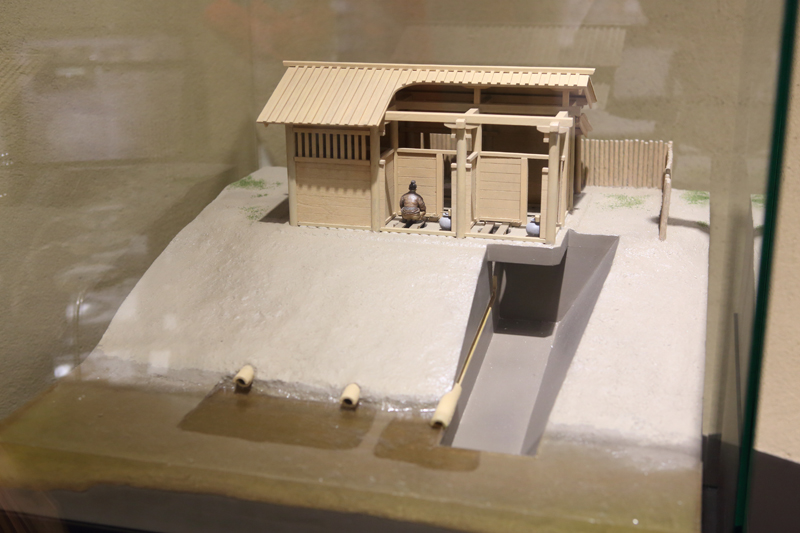
(Akita Castle ruins Historical Museum/Akita City) © Akita Tourist Photo Gallery
The Ando clan of Jusanminato, which reached its heyday from the late Heian period to the Kamakura period.
The Heian period began to form the late stages, and in the Tohoku region, the struggle for supremacy between powerful clans intensified. , with the Abe clan, who boasted a powerful force in Mutsu Province (Munokuni/part of Iwate/Aomori prefectures) on the Pacific side of the Tohoku region, and Minamoto Yoriyoshi ( Munokuni / Director of Mutsu Province Minamoto Yoriyoshi (988-1075 ) , who was the chief of Mutsu Province (Munokuni/1050-1062/The role of Zenkunin no Eki) and the Kiyohara clan of Dewa Province (Akita/Yamagata prefecture), who gained strength in the Battle of the 9th year , rebelled. In the next three years, the Kiyohara clan was destroyed and the Oshu Fujiwara clan began to rise.
Minamoto no Yoritomo (1147-1199), who was not happy with the control of the Tohoku region of the Oshu Fujiwara clan, forced the Oshu Fujiwara clan to be destroyed by his younger brother Minamoto no Yoshitsune (1159-1189), on the grounds that Fujiwara Hidehira (1122?-1187) were hiding.
Around that time, Takaakimaru, the son of Abe Sadato (1019-1062), the leader of Abe clan, which was destroyed in the Battle of the 2019th year, reached Fujisaki (Fujisakimachi, Aomori Prefecture), and after becoming an adult, he founded the Ando clan (later Ando clan), and grew his power based at Fujisaki Castle. During the Kamakura period, the Ando clan was tasked with managing Ezo (Hokkaido) by the shogunate, and is said to have flourished greatly. He then moved his home base to Jusanminato (Tosaminato, Goshogawara City, Aomori Prefecture, famous for Lake Jusan), and for the next 350 years he reigned as a great lord of Tsugaru.
The Ando clan entered Noshiro from Matsumae and was under the control of the Hiyama Ando clan.
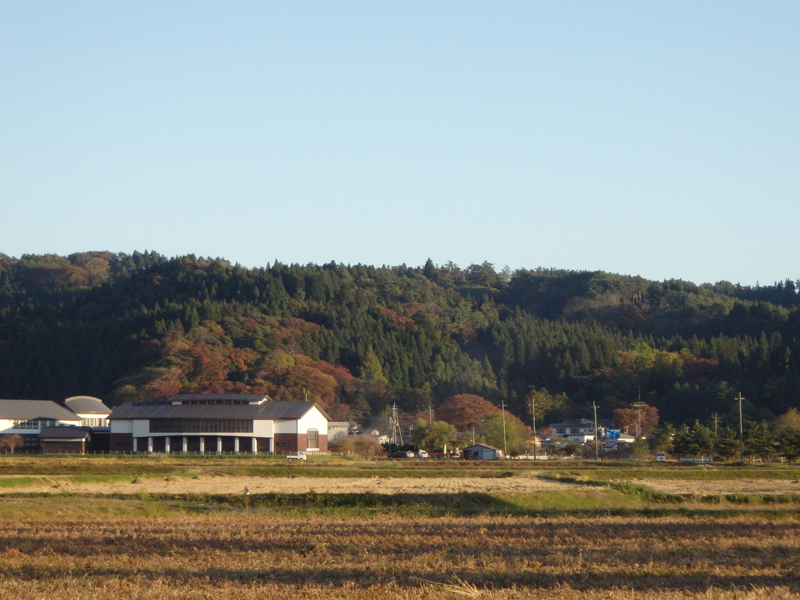
In the mid-15th century (Muromachi period), the Nanbu clan, based in Morioka (Morioka City, Iwate Prefecture), which was aiming to control Tsugaru, began to enter the country. The Ando clan fought back, but the Nanbu clan's military strength was strong, and they abandoned the Tsugaru land and fled to Matsumae, Hokkaido.
family who vows to make a comeback , will not stay in Matsumae for a long time and return to the mainland. In that case, the company will not return to Jusanminato, but will be based in Hiyama Hiyama Ando . After that, in 1495, Tadasuke, the second head of the Hiyama Ando clan, completed Hiyama Castle, and until 1598 he moved his base to Minato Castle in Tsuchizaki Minato (Tsuchizaki Port, Akita City), it was used as the castle for the Hiyama Ando clan for six generations, from Masaki, Tadasuke, Hirosue, Kiyosue, Chikasue and Sane.
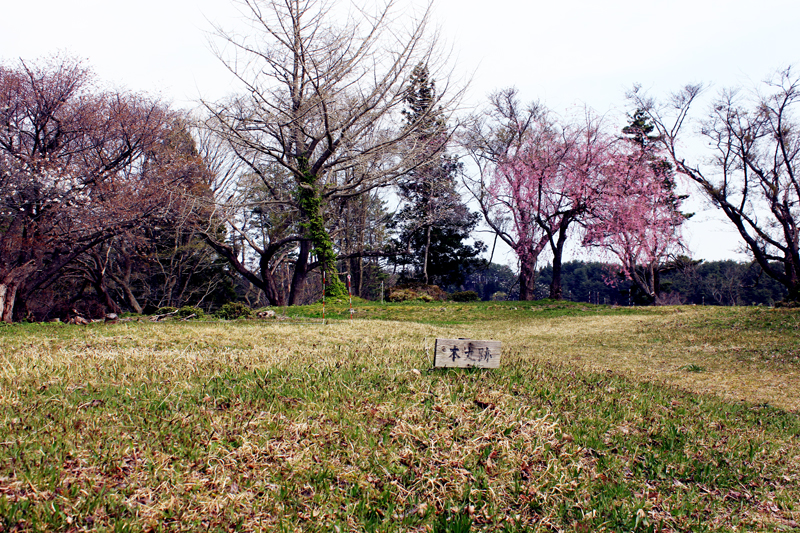
Hiyama Castle was a mountain castle shaped like a horseshoe (hardware/hardshoe that protects horse claws), and had a very large site for that time, 1,500m east and west and 900m north and south. the Kiriyama Castle Horiuchi Castle , the , which was built as a branch castle for Hiyama Castle Odate also known as the Hiyama Ando clan's family temple, Kokuseiji, have been built in the area.
Hiyama Castle was an impregnable castle

The Ando clan was able to demonstrate their strength as a family in Tsugaru, but they split into two factions from the late Kamakura period to the early Muromachi period. The divided faction abandoned Tsugaru, descended south, built Minato Castle in Tsuchizaki Minato in Akita, and expanded its territory. Meanwhile, the Ando clan, who remained in Tsugaru, later became their home base in Noshiro Hiyama. To distinguish the Ando clan, which has been split into two, the Ando clan of Tsuchizaki Minato is called the Minato Ando clan , and is called the Hiyama Ando clan It seems that it was around this time that the Ando clan was renamed the Ando clan.
The Hiyama Ando clan and the Minato Ando clan were not close and were in conflict every once in a while. In 1589, the Minato Ando clan attacked Hiyama Castle, the Hiyama Ando clan for five months, but they did not attack, and in the end they also received external reinforcements to the Hiyama Ando clan, and the Minato Ando clan was defeated. later called the " Minato Disturbance ," was the trigger for Ando (Akita), head of the Hiyama Ando clan, to leave Hiyama Castle.
The castle was abandoned by the Edo period, one country and one castle ordinance.
In the Edo period, the Satake clan joined Akita due to the national change (Kunigae/daimyo transfer/transfer/transfer = Iho, transfer = Tenpo) carried out by the Tokugawa Shogunate. As a result, the Ando clan, who called themselves the Akita clan, was transferred to Hitachi Province Hiyama Castle was marked by the Oba clan (later Odate Castle ruled when he called the Satake clan and the Satake Nishi family) and Tagaya Nobuie, who were retainers of the Kubota Domain (Akita Domain), and the Tagaya Nobuie, who were retainers of the Kubota Domain (Akita Domain), but Hiyama Castle was abandoned due to the one-country and one-castle ordinance issued by the Edo Shogunate in 1620. The ruins of the Hiyama Ando clan castle, the remains of the Odate castle, and the Chausukan are nationally designated historic sites.
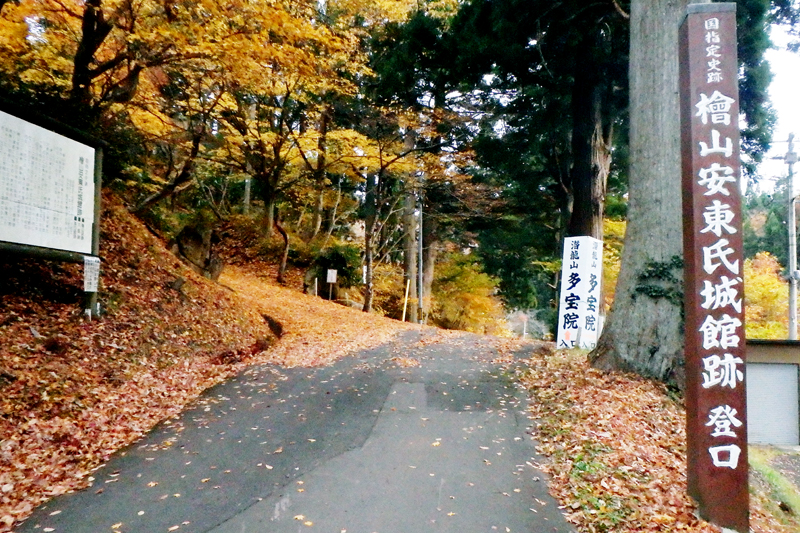
Hiyama Andoji Castle Remains <Information>
- Facility name: Hiyama Andoji Castle ruins
- Location: Hiyama, Noshiro City, Akita Prefecture
- Phone number: 0185-74-6040 (Noshiro City Cultural Property Protection Office)
Google Map
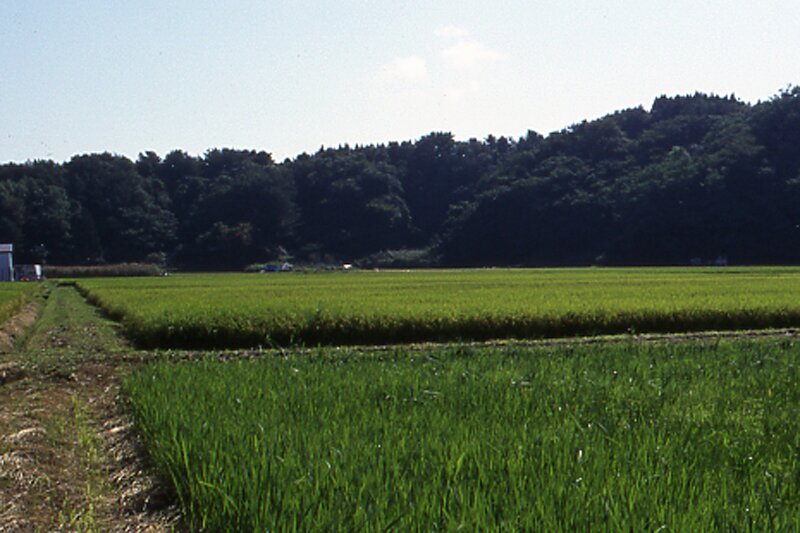
Odate ruins <Information>
- Facility name: Odate ruins
- Location: Tatokouchi Nanohe Sub-section, Noshiro City, Akita Prefecture
- Phone number: 0185-74-6040 (Noshiro City Cultural Property Protection Office)
Google Map
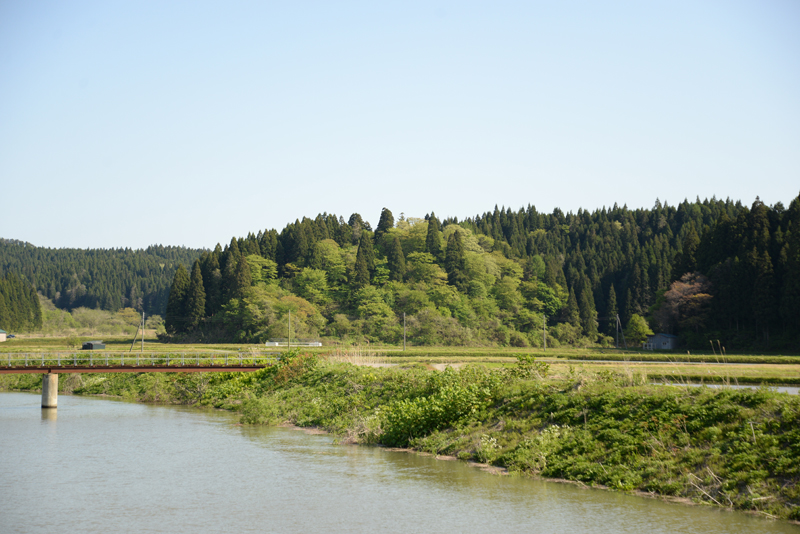
Chausukan Remains <Information>
- Facility name: Chausukan ruins
- Location: Hiyama Koshioshi, Noshiro City, Akita Prefecture
- Phone number: 0185-74-6040 (Noshiro City Cultural Property Protection Office)
Google Map

Kokuseiji Temple Ruins <Information>
- Facility name: Kokuseiji Temple ruins
- Location: Hiyama, Noshiro City, Akita Prefecture
- Phone number: 0185-74-6040 (Noshiro City Cultural Property Protection Office)
- Access to the ruins of Hiyama Castle:
- Public Transportation/Approximately 10 minutes by taxi from Higashi-Noshiro Station on the JR Ou Main Line and Gono Line
- Car/Approximately 15 minutes by car from Noshiro Higashi IC on the Akita Expressway
Google Map
During the Edo period, the Noshiro region was the port of call for Kitamae Ships, and became a distribution hub in northern Akita Prefecture, including Noshiro, and was a very lively port of loading minerals such as Akita cedar and the Ani Mine (Anikozan/Kita Akita City) collected from the Yoneshiro River.
We will introduce Noshiro from the Edo period onwards in a separate section.


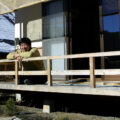

![Akita dogs are treasures in Japan! The Akita Inu Preservation Society in Odate City strictly manages pedigree [Akita Prefecture] Akita dog](https://jp.neft.asia/wp-content/uploads/2024/01/25534593_m-150x150.jpg)
![[Akita Prefecture/Oga Peninsula] Full of view points. Oga Peninsula, a magnificent park created by the earth 3D84CC3D4A133D89422D448F000C277B](https://jp.neft.asia/wp-content/uploads/2024/04/3d84cc3d4a133d89422d448f000c277b-150x150.jpg)
![[Noshiro City, Akita Prefecture] The cutting edge of rocket research begins in Noshiro City. "Noshiro Rocket Testing Site" cb62440881237be2ab3733746788f4dc](https://jp.neft.asia/wp-content/uploads/2022/07/cb62440881237be2ab3733746788f4dc-150x150.jpg)
![[Hirogata reclamation history ①] The second largest lake in Japan has become a vast rice field [Ogata Village, Akita Prefecture] 7561d23df2a0ec24c664e184c3fc8d8f](https://jp.neft.asia/wp-content/uploads/2024/07/7561d23df2a0ec24c664e184c3fc8d8f-150x150.jpg)
![[History of Hachirogata Reclamation 2] How was the reclamation ground created? [Hachirogata Town, Akita Prefecture] f3caff848099ab5806b64ce9b80dfc4f](https://jp.neft.asia/wp-content/uploads/2024/07/f3caff848099ab5806b64ce9b80dfc4f-150x150.jpg)
![Hot springs gush out in a place where there are no volcanoes! "Yuzawa Geopark" where you can see the mystery of the earth up close [Akita Prefecture] 4550228_m](https://jp.neft.asia/wp-content/uploads/2023/02/4550228_m-150x150.jpg)
![The popular game "Matagi" started in Kitaakita City! [Akita Prefecture] matagi](https://jp.neft.asia/wp-content/uploads/2024/04/matagi-150x150.jpg)
![Yurihonjo City, where Honjo, Kameda and Yajima domains were intersected between the Kubota and Shonai domains [Akita Prefecture] FF2C8AAA4350E7E179F97F97B38B3A2302F-1](https://jp.neft.asia/wp-content/uploads/2024/04/ff2c8aaa4350e7e179f97f38b3a2302f-1-150x150.jpg)
